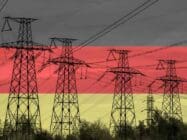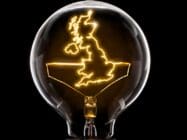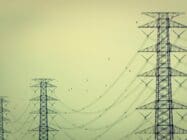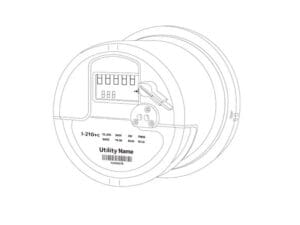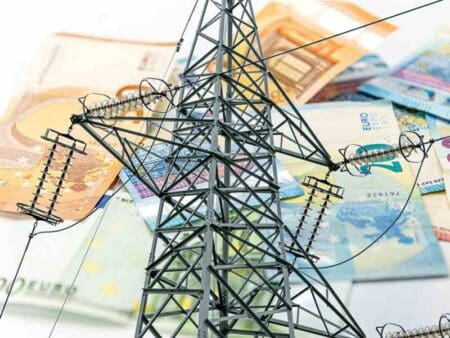
Reflecting on a week of record finance results from German and Dutch utilities, Smart Energy’s Power Playbook column sees Yusuf Latief discuss grid investment plans and whether they are indicative of grid planning finally going right.
Whenever I think back to 2023, one major sentiment that comes to mind is the urgent need for investment in Europe’s power grid system.
Interconnected renewables are coming online at a pace that the current grid infrastructure wasn’t built to withstand. And although the ramifications of this have started to show, investments seem to be able to bring relief.
Over the last week, this notion has been reinforced as some of Europe’s top utilities have released their financial results for the 2023 fiscal year.
The key takeaway, you ask?
Europe is finally investing heavily into its grid infrastructure with “record levels of investment” a phrase placed on repeat. The adage is sometimes followed either optimistically with “record investment plans” or more somberly with “it’s not enough.”
So, what does this tell us about the investment landscape within which grid business stands?
‘Plans’ are translating into action
Over the last week, utilities have released their financial results and laid out their investment plans for the coming years.
Germany’s 50Hertz is looking to invest €20.7 billion ($22.6 billion) in overhead power lines, on- and offshore cables, substations and other technologies, a three-quarter leapfrog compared to €4.8 billion ($5.2 billion) from the past half-decade.
E.ON is planning a €9 billion ($9.8 billion) increase to its 2024 to 2028 investment plan from €33 billion ($36 billion) to €42 billion ($46 billion), focusing on energy networks and energy infrastructure solutions.
And TenneT, which operates both in Germany and the Netherlands, is expecting to grow its investments to at least €10 billion annually.
Although very much welcomed, one tends to look towards ‘plans’ with a drizzle of scepticism. But what has been surprising is that these utilities and others are simultaneously announcing record investments in their 2023 results.
In Germany, E.ON invested €5.2 billion ($5.7 billion) in network expansion, modernisation, and digitalisation and 50Hertz invested €1.7 billion ($1.9 billion) in grid infrastructure.
TenneT invested €7.7 billion ($8.4 billion) between Germany and the Netherlands.
In the Netherlands, utilities Alliander, Stedin and Enexis each stated record levels of €1.4 billion ($1.6 billion), €1.214 billion ($1.327 billion) and €832 million ($909 million) respectively.
Penning an action plan and moving from paper to implementation are two very different challenges. It is encouraging to see this transition being made.
However, these statistics then beget a follow-up question:
Have you read:
Dutch demand continues to outstrip supply despite record grid investments
Europe’s DSOs set out Green Deal infrastructure priorities for distribution grids
Is it enough?
In the Netherlands, it is not.
Alliander states that despite their record investments and upward plan, bottlenecks will be recurring on the power grid for at least the next decade. Even though this has been a repeated news item in recent years, it still warrants worry.
A case study to illustrate this is that of Dutch-owned TenneT, which has been mulling sale of its German operations to Germany’s Federal government for months now.
According to Handelsblatt reportage, the Federal Ministry of Economics is very interested in the German TenneT subsidiary, as the company is responsible for important north-south electricity highways.
The Netherlands, on the other hand, want to sell because they are afraid of the billions of euros in investments that will be needed over the coming decade to make the power grid fit for purpose.
Additionally, although TenneT reported healthy financial results for 2023, underlying revenues decreased for the utility by €600 million ($655 million), driven by a decline in ancillary service costs.
Said costs originate in lower market prices for costs incurred by TenneT to compensate for grid losses, maintain energy balance in the grid and pay for alternative electricity routes in case of congested or unavailable grid sections, as is the frequent case in the Netherlands.
Grid congestion and outstanding customer connection requests in the Netherlands, states TenneT, are being addressed through the National Grid Congestion Action Plan (LAN) and “unorthodox measures”, such as flexibility mechanisms, with which TenneT operates the grid at its limits.
Grid congestion has been hampering the utility not only in the Netherlands but also in Germany, where numerous bottlenecks in the grid on land cause large wind farms in the North Sea to be curtailed and redispatch limits the generation of offshore wind power.
This not only affects the amount of electricity fed into the grid, but also impacts its price development.
Also of interest:
The biggest market trends according to energy experts at DISTRIBUTECH International
How to win the Home Energy Management business battle
What more do we need?
In its Electricity Grids and Secure Energy Transitions report, the IEA states that globally we need to add or replace 80 million kilometres of power grids. Global investments in grids, which has otherwise remained stagnant, now needs upwards of $600 million annually a year by 2030.
Additionally, citing data from 2021, the report finds that grid-related outages impacted the German economy by up to $3.6 billion, highlighting the role of the grid in minimising economic loss.
Illustrated by the cases of the Netherlands and Germany, Europe is clearly seeing its fair share of hurdles to be overcome, but positive signs can still be found if you know where to look.
Take for example the EU Grid Action Plan, which will improve access to finance for grid projects. The action plan is also expected to identify tailored financing models and increase visibility on opportunities for EU funding programmes for smart grids and distribution modernisation.
Although much more, both in terms of euros and cabled kilometres, is needed to reach a grid fit purpose, we can still be hopeful as plans are pushed into action.
How much are you investing into the grid now and do you think it will be enough to enable the energy transition? Let me know.
Cheers,
Yusuf Latief
Content Producer
Smart Energy International



